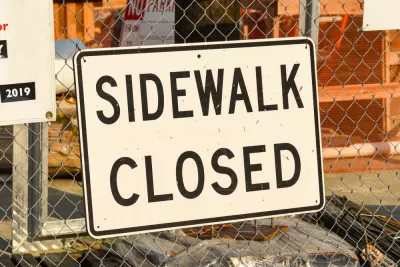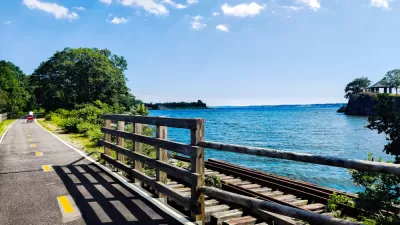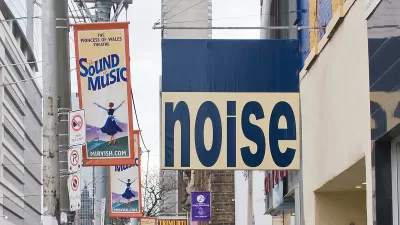A new study by researchers at Illinois State University and the University of Michigan measured the informal footpaths—also known as "desire lines"—of Detroit.

Alec Foster and Joshua P. Newell have published a study for the Landscape and Urban Planning journal that measures the informal footpaths known as desire lines crisscross the city of Detroit.
According to the abstract for the study, Detroit has more than 5,680 of these footpaths, totaling more than 150 miles, and a complete knowledge of those desire lines can be a value to transportation planners, urban theorists, and community activists.
"Transportation planners may value desire lines for their efficiency, reducing travel time and distance. Urban theorists and community activists, however, view desire lines as a form of resistance and reclamation of space for a public poorly served by urban institutions," according to abstract.
The idea proposed by this study, however, is that these two benefits can co-exist. "Desire lines are creative attempts to expand urban possibilities, enhance efficiency, and reaffirm agency in increasingly regulated cities."
Using spatiotemporal analysis, the study also finds that desire lines are disappearing in Detroit, correlating with "changes in land ownership, management practices, and population dynamics."
"The loss of desire lines exposes the limits of informal practices and indicates the need for connections to broader relationships of power and governance," according to the abstract.
FULL STORY: Detroit’s lines of desire: Footpaths and vacant land in the Motor City

Alabama: Trump Terminates Settlements for Black Communities Harmed By Raw Sewage
Trump deemed the landmark civil rights agreement “illegal DEI and environmental justice policy.”

Planetizen Federal Action Tracker
A weekly monitor of how Trump’s orders and actions are impacting planners and planning in America.

The 120 Year Old Tiny Home Villages That Sheltered San Francisco’s Earthquake Refugees
More than a century ago, San Francisco mobilized to house thousands of residents displaced by the 1906 earthquake. Could their strategy offer a model for the present?

In Both Crashes and Crime, Public Transportation is Far Safer than Driving
Contrary to popular assumptions, public transportation has far lower crash and crime rates than automobile travel. For safer communities, improve and encourage transit travel.

Report: Zoning Reforms Should Complement Nashville’s Ambitious Transit Plan
Without reform, restrictive zoning codes will limit the impact of the city’s planned transit expansion and could exclude some of the residents who depend on transit the most.

Judge Orders Release of Frozen IRA, IIJA Funding
The decision is a victory for environmental groups who charged that freezing funds for critical infrastructure and disaster response programs caused “real and irreparable harm” to communities.
Urban Design for Planners 1: Software Tools
This six-course series explores essential urban design concepts using open source software and equips planners with the tools they need to participate fully in the urban design process.
Planning for Universal Design
Learn the tools for implementing Universal Design in planning regulations.
Clanton & Associates, Inc.
Jessamine County Fiscal Court
Institute for Housing and Urban Development Studies (IHS)
City of Grandview
Harvard GSD Executive Education
Toledo-Lucas County Plan Commissions
Salt Lake City
NYU Wagner Graduate School of Public Service





























